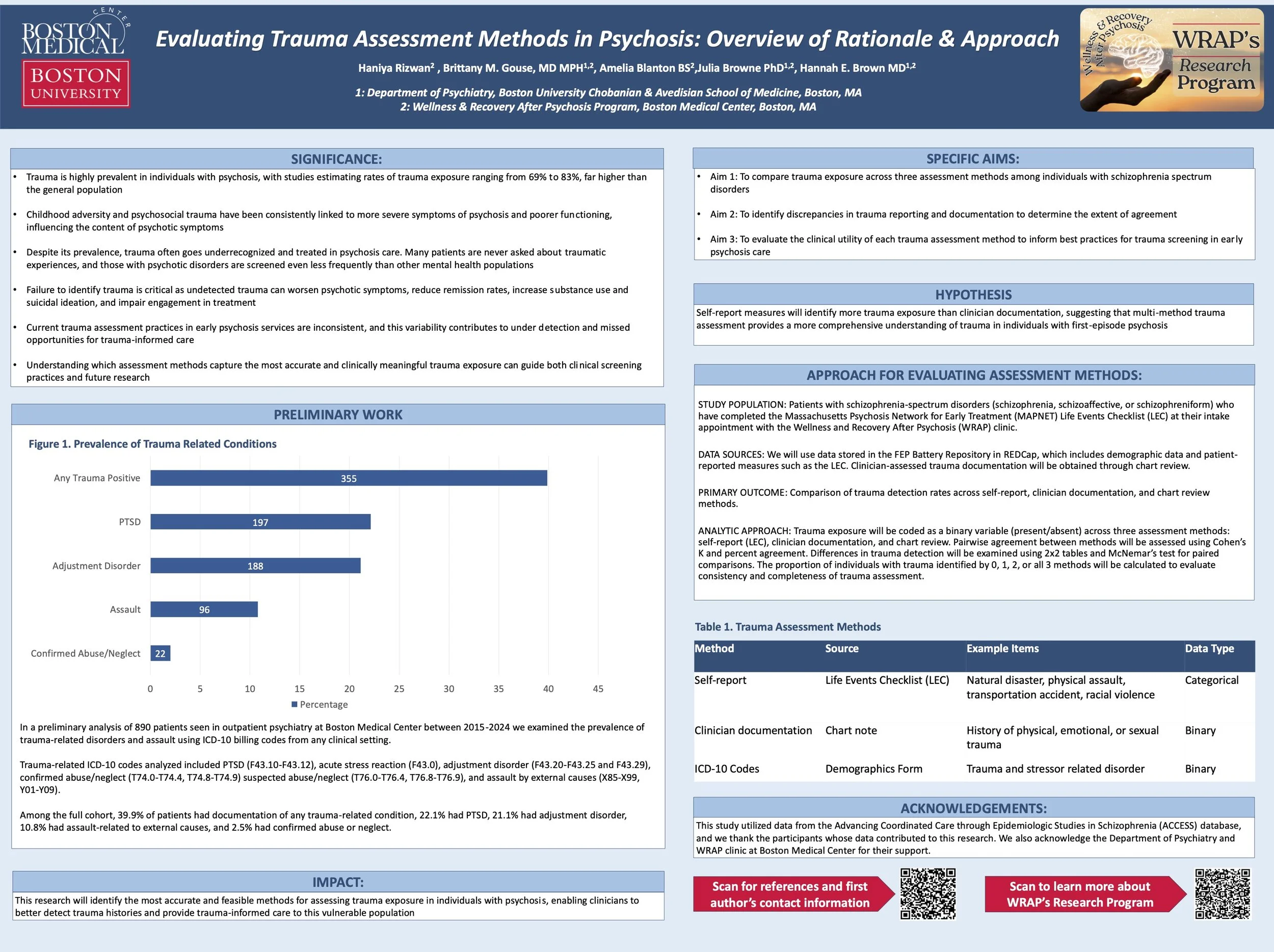Evaluating Trauma Assessment Methods in Psychosis
Haniya Rizwan (1), Brittany Gouse MD MPH (1,2), Julia Browne PhD (1), Amelia Blanton BA (1), Janice Weinberg ScD (1,2), Hannah E. Brown MD (1,2)
1. WRAP Research Program, Department of Psychiatry, Boston Medical Center
2. Boston University Chobanian & Avedisian School of Medicine
Background: Accurately identifying individuals’ experience of trauma is critical, since trauma is an often-overlooked comorbidity with psychosis that significantly influences treatment and recovery outcomes. Trauma exposure is often underreported and under-assessed among individuals with psychosis. This study evaluated the extent of agreement and consistency between two methods of assessing trauma exposure in young adults with first-episode psychosis (FEP).
Methods: We extracted data from the Wellness and Recovery After Psychosis (WRAP) FEP Battery Repository. Trauma assessment methods consisted of a formal PTSD diagnosis in the chart captured by Demographics Form 1 and patient-reported trauma exposure on the Life Events Checklist. Each measure was coded as a binary trauma exposure variable, and the percentage of individuals where 0, 1, or both assessment methods indicated trauma exposure was calculated.
Results: Among individuals who completed the Life Events Checklist, 12.5% showed no evidence of trauma on either assessment, 80% had trauma identified by only one method (predominantly the checklist), and 7.5% had trauma indicated by both methods.
Conclusions: These findings highlight that trauma exposure is often detected via self-report and may not always be documented as a PTSD diagnosis. Therefore, having several consistent and accurate trauma assessment methods is critical to identifying clinically relevant information in individuals with psychosis. Improving the identification of trauma exposure can inform treatment planning, support trauma-informed care, and ultimately prevent adverse outcomes.

